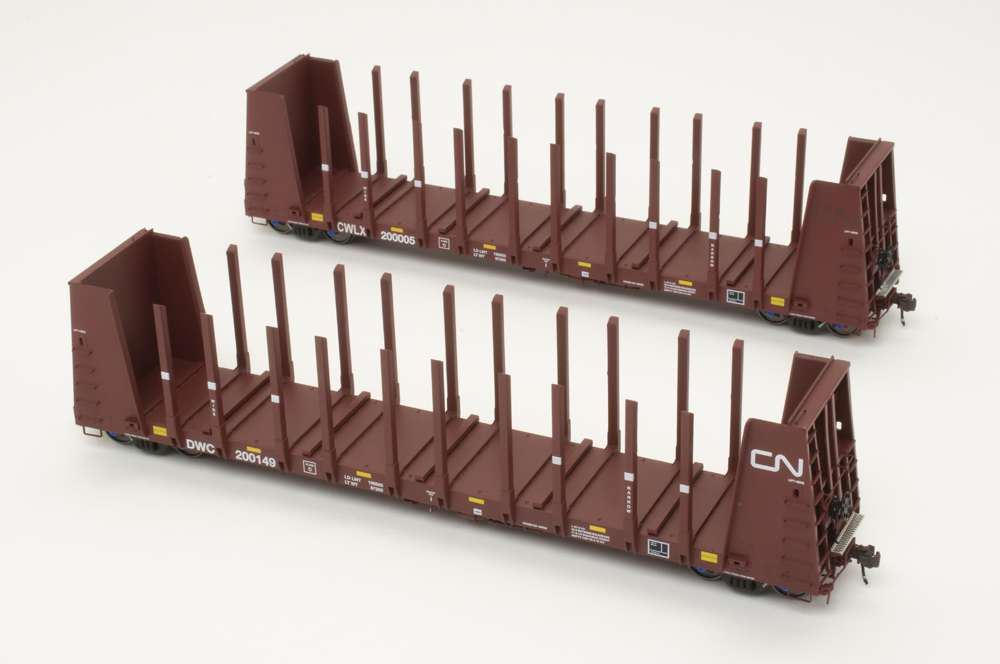
The FreightCar America (FCA) 52-foot, 100-ton bulkhead flatcar with side stakes is the third HO scale freight car released by Otter Valley Railroad, a hobby shop located in Tillsonburg, Ont. Features on the newly tooled model include an injection-molded plastic body, die-cast metal underbody, and trucks with rotating bearing caps.
The prototype
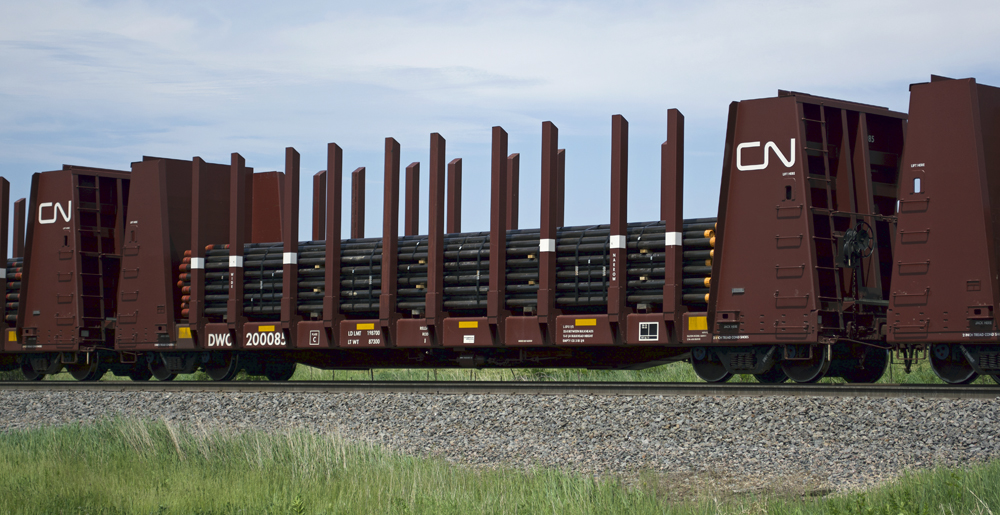
We received two samples, Canadian National (CN) No. 200149 with Duluth, Winnipeg & Pacific (DWC) reporting marks and International Railcar Services Inc. (CWLX) No. 200005. The models are based on full-size cars constructed by FreightCar American under order 160020 between February and April 2013. The cars, built for CN, were assigned DWC reporting marks and numbered in the 200000 through 200149 series. Based on photos that I found online, some of the cars from this group became part of the International Railcar Services fleet in the early 2020s.
The full-size cars are mainly used to transport pipe used in oil fields and oil production. As shown in the prototype photo above, the ends of the pipe are color coded. Examples I saw included orange, red, and white. The color indicates the number of threads per inch on the pipe ends.
The FCA 52-foot, 100-ton bulkhead flatcars can be found throughout the United States. In addition to the cars I spotted in Wisconsin, I’ve seen images of the pipe haulers in Alabama, Arkansas, Illinois, Indiana, Kansas, Missouri, and Oklahoma, among other locations.
The models
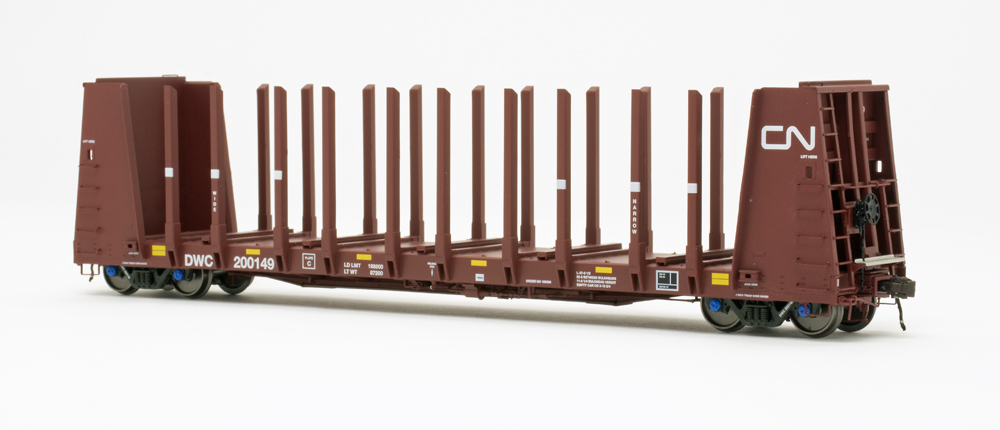
The Otter Valley Railroad HO bulkhead flatcars have injection-molded plastic bulkheads, side sills, and side stakes. Five formed-wire grab irons are attached to both sides of the bulkheads. Like the full-size cars, the bottom two grab irons are wide and have a single dog-leg bend. The other three grabs are narrow and straight. The underframe-mount stirrup steps are formed metal parts that fit into openings in the bottom of the side sills. Fastener detail, accurately four bolts per stirrup, is molded on the bottom of the sills.
Molded details include the route card holders and Automatic Equipment Identification (AEI) tags, both on the bulkhead sides. The AEI tags should be painted gray, which would be easy to do with paint and a fine paintbrush.
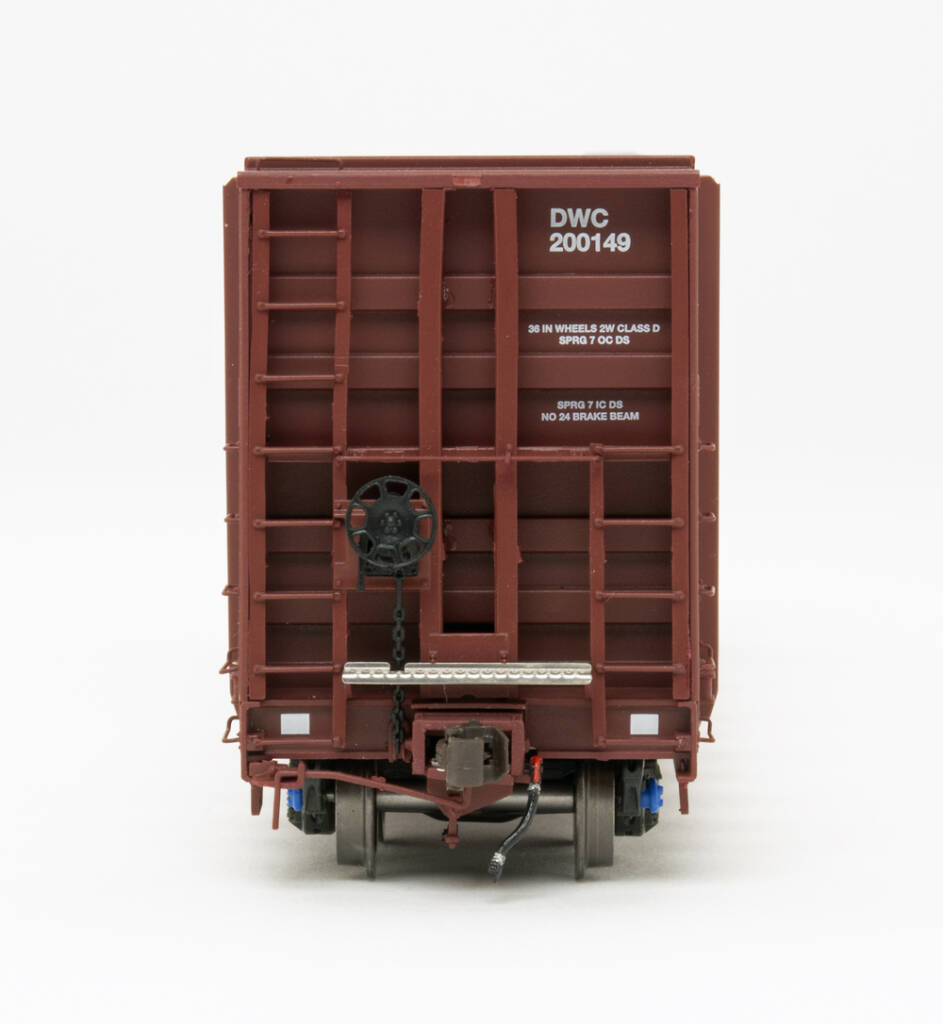
The plastic bulkheads are smooth on the front, simulating the metal face found on the full-size cars. The opposite side features four horizontal braces (approximately .040” x .100”). An inset plastic casting contains the corner posts, ladder stiles, molded ladder rungs, and a single horizontal brace (roughly .030” x .188”). The end posts are notched to fit over the four horizontal braces.
Etched-metal crossover platforms are attached to a plastic shelf above the coupler on both ends. Formed wire crossover handrails, threaded through a metal eyebolt, are located about halfway up the car end. Both bulkheads are capped with brass Z channel. A wire grab iron is located on top of the cap above the tall ladder.
The uncoupling lever brackets and levers are cast as a single piece. A tab on the end of the bracket fits into a slot on the car body; the lever end fits in a hole in the bottom of the plastic draft-gear box cover. To the right of the draft-gear box on both ends is a trainline air hose. The plastic hose is painted black with the ferrules picked in silver and the angle cock handle in red.
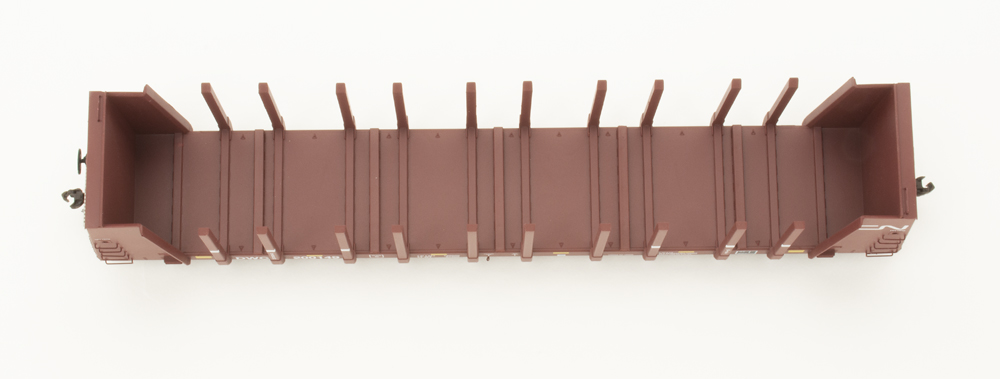
The plastic deck features molded tie-down anchor detail. Twelve of the deck risers are molded. The five located between the side stakes are factory-installed parts. They have pins on the bottom that fit into holes in the flatcar deck. On the full-size cars, these are inverted pieces of channel with flanges along the top edges. Boards are secured inside the flanges with fasteners. All of the deck risers on the model have weld bead detail along the edges.
The side stakes are also injection-molded plastic. The top of each stake has an inward taper to match the prototype. Each stake accurately features a welded reinforcement plate at the base.
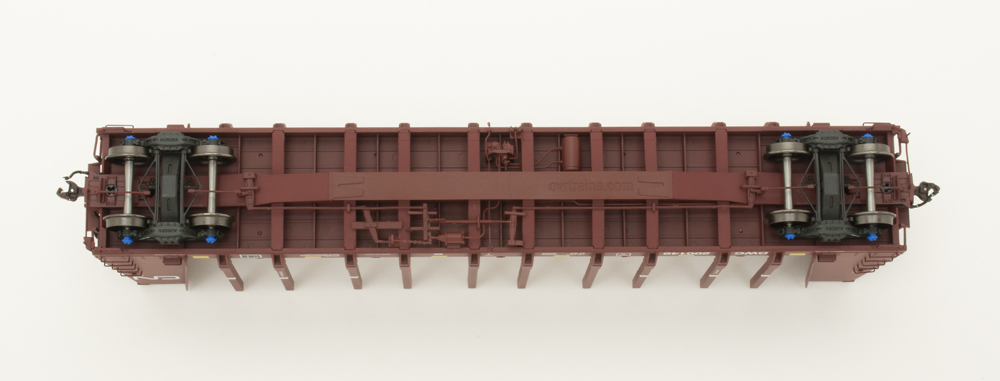
The underbody has a mix of plastic, die-cast metal, and formed wire construction. The stringers and cross members are molded into the underbody. Much of the 3.3 ounces of weight comes from a die-cast metal part that includes the body bolsters, bolster block, center sills, cross bearers, and draft-gear boxes. A plastic plate, which has four pins on the bottom and the hobby shop’s URL, is secured to four holes in the metal sills with cyanoacrylate adhesive.
The brake system is made up primarily of finely molded, freestanding plastic parts. Formed wire was used for the release rod handles on both sides.
The cars ride on screw-mounted Aurora Miniatures North America trucks with correctly gauged 36” metal wheelsets and rotating bearing caps. The covers over the screws can easily be removed with a flat-blade screwdriver. The brake beams are factory applied, and the brake shoe detail is in line with the wheel tread.
Sales literature notes that the flatcars come with Brenco or Timken bearing caps as appropriate; both of our samples have the former. The blue Brenco Class K 6-1/2 x 9 bearings are used on full-size cars with 286,000-pound trucks.
The models are equipped with body-mounted AuroraJanney scale plastic couplers. They were .015” too low on both ends of the DWC car and at the correct height on the CWLX model. The couplers feature integral centering springs and an internal knuckle spring. However, if you use between-the-rails uncoupling magnets, be aware that the couplers lack trip pins.
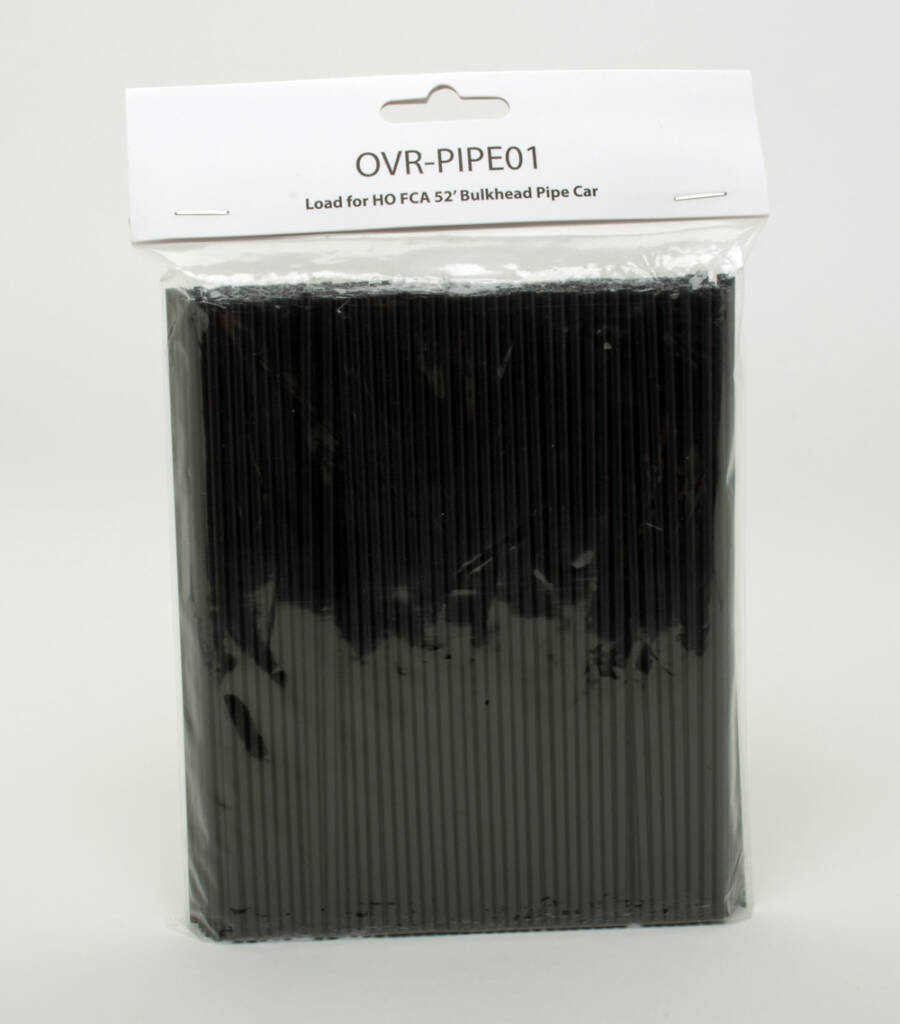
Otter Valley Railroad offers a pipe load kit for its HO scale bulkhead flatcar that retails for approximately $12.50 (the price may vary based on the current exchange rate). The kit, OVR-6500-Pipe, contains enough material to complete 2-1/2 cars. You could further enhance the realism of the load by painting the pipe ends, adding banding strips, and installing wood runners.
Tale of the tape
The paint on both of our samples was smooth and evenly applied. The lettering, herald, and stripe placement matched prototype photos. I especially liked the silhouette of the CN “wet noodle” herald on the CWLX car. The heralds were peeled off the bulkheads when the full-size cars were acquired by International Railcar Services.
There were a few minor paint and lettering issues. The white stripe should be on the front and both sides of the side stakes. In addition, the typeface for the reporting mark, road number, capacity data, and other stencils is incorrect. The model uses a font from the Helvetica family, while the prototype has lettering from the Futura family.
I then compared the models to prototype drawings from the FreightCar America website. The cars match or is within scale inches of the approximate general dimensions listed. The 36” metal wheelsets are correctly gauged. At 3.3 ounces, the models are 1.7 ounces too light per National Model Railroad Association Recommend Practice 20.1.
I took the cars over to Jones Island on our Milwaukee, Racine & Troy staff model railroad to test them in an operating layout environment. The cars performed without incident while being pushed and pulled in a train. The AuroraJanney couplers were compatible with other plastic and metal offerings with scale and standard heads.
The Otter Valley Railroad HO bulkhead flatcars are well-executed models of a unique prototype. If you model the modern era, you’ll want to add a few of these cars to your freight car fleet.
Facts & features
Price: Single car, $51.30; six-pack, $278.47. Price may vary based on exchange rate.
Manufacturer
Otter Valley Railroad Inc.
37 Tillson St., Unit E
Tillsonburg, Ontario, Canada
N4G 0B7
Era: 2013 to present
Road names: Canadian National (Duluth, Winnipeg & Pacific reporting marks) in 12 road numbers and International Railcar Services Inc. (CWLX marks) in 13 numbers. Also available painted Mineral Red with data only.
Features
- 36” metal wheelsets, in gauge
- Body-mounted AuroraJanney plastic scale couplers. At correct height on CWLX car, .015” too low on CN car.
- Weight: 3.3 ounces (1.7 ounces too light per National Model Railroad Association Recommended Practice 20.1)








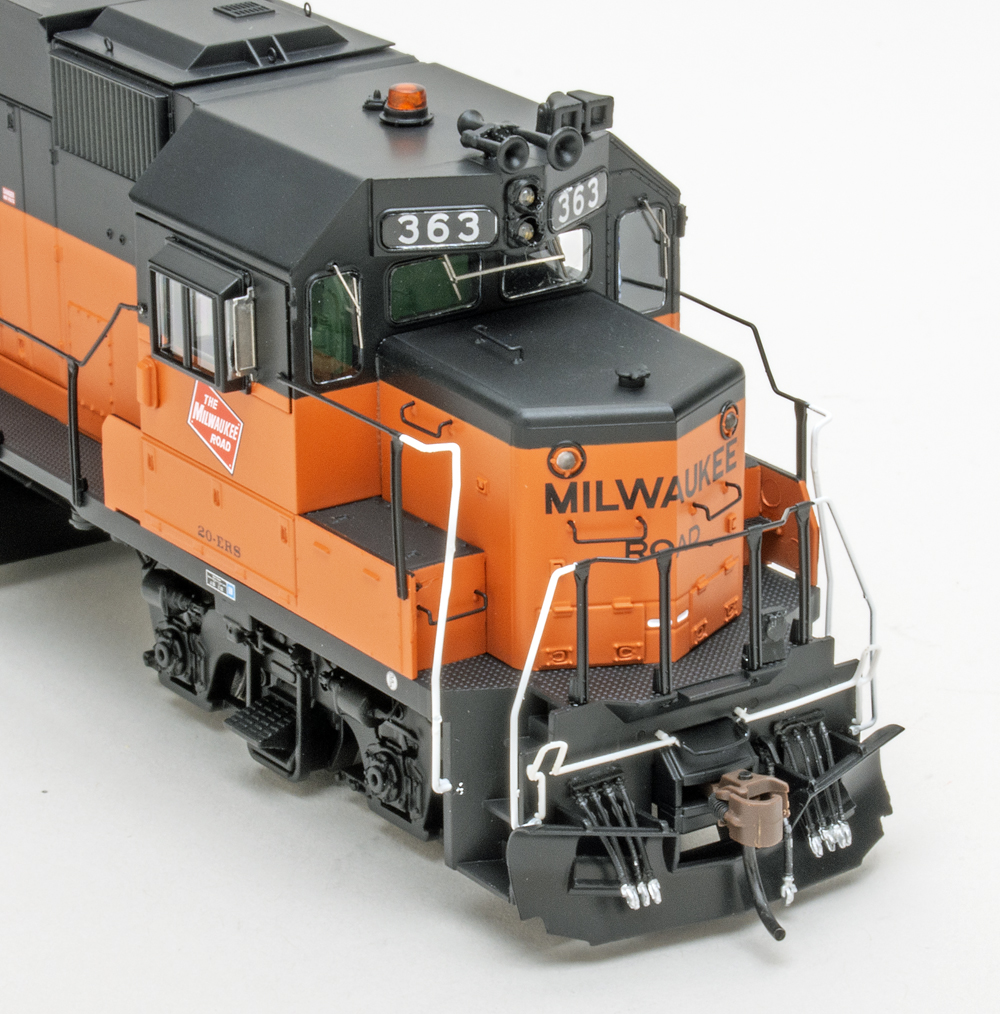





WOW!! Those are really nice. Thank you Otter Valley for the model and thank you Cody for the review.